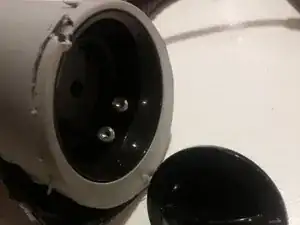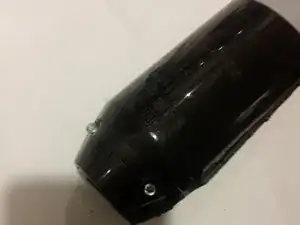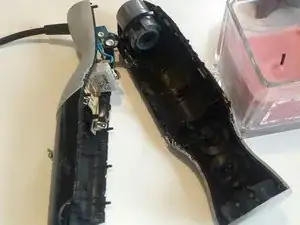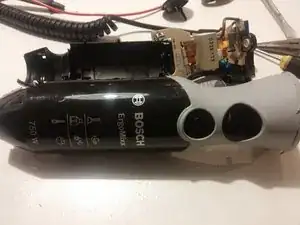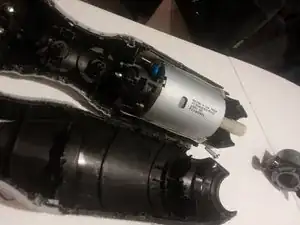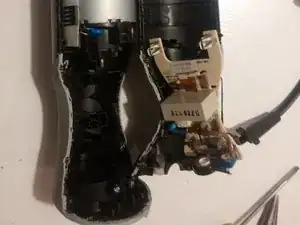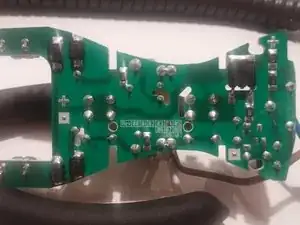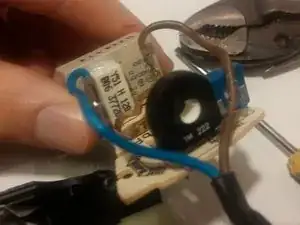Introduction
This disassembly can almost be done without breaking the case. However I discovered that too late.
In my case the motor spins using a 12v supply. The problem was the heat fuse which had gone off.
Tools
-
-
Use a knife to cut the soft gray rubber along with the two sides ( on each side of the power buttons)
-
Note the small pegs on the inside be careful not to break them!
-
-
-
The turbo mode just passes an heat and current fuse before the voltage is applied on the motor.
-
The motor control board is easily deattached from the motor
-
-
-
The heat fuse (white component 'Y51 H 120...' next to the blue wire) is of the type: 120 degrees Celcius, 3 Amperes and it handles 250VAC
-
Check the heat fuse by measuring the resistance over the heat fuse, it should be very close to 0(mine was 0.03 ohm) if it's working. NOTE: even though it's resistance is 0 it could still be the close to broken. When current current passes through it might build up resistance.
-
My motor did spin with 12v applied directly to it's poles(though not very fast). The fault of my machine was that the heat fuse had "blown off" after replacement it worked perfectly again!
-
The DC motor is specified to 230v and is of a brushed type.
-
-
-
I succesfully used an heat fuse from ebay with the following specifications : * Temperature Rating: 131° * Current Rating: 3A * Voltage Rating: 250Vac * Body Width: 6mm * Body Height: 6mm * Body Depth: 2.5mm
-
To reassemble your device, follow these instructions in reverse order. Note that it will look "opened" afterwards.

